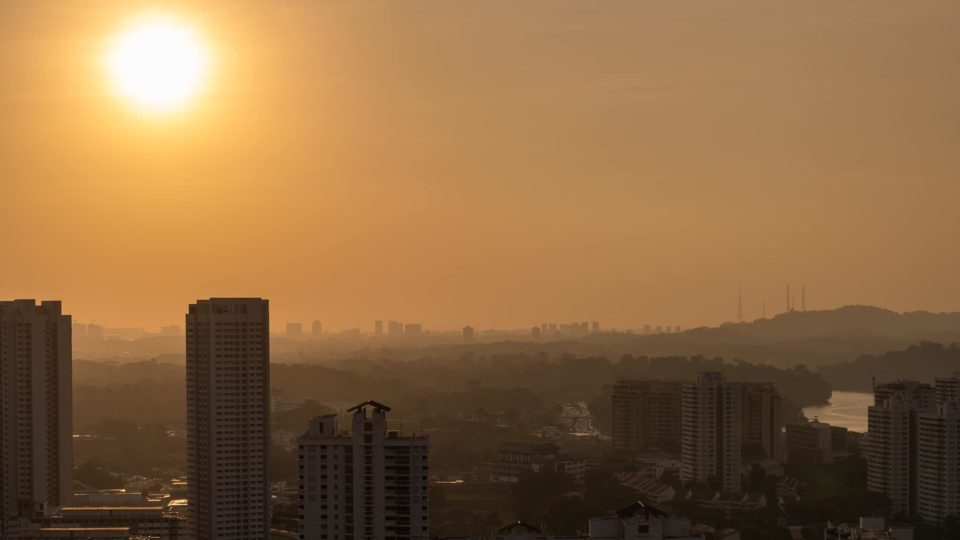The thick air pollution over Singapore’s this past weekend was ozone smog, the environment agency clarified today, a day after reporting pollution hot spots across the Mekong region.
The National Environment Agency, or NEA, said Saturday’s “unhealthy” air quality was caused by increased levels of ozone, and people were wrong to link them to smoke from regional burning that it details alongside its air quality data.
“At 7pm on Saturday (Feb 27), the Pollutant Standards Index (PSI) in the north region entered the unhealthy range due to heightened levels of ozone,” the agency said. It had not responded to Coconuts’ queries for comment as of publication time.
Most urban smog today occurs when chemicals from man-made sources such as auto exhaust, paint fumes, and coal factories interact to create ground level ozone. Ozone can injure the lungs and cause the eyes to burn. The environment agency measures those levels along with so-called PM2.5 micro-particulate pollution, which can enter human organs and pose a potentially serious risk to human health.
The NEA said those pollutants were “within the normal levels” but weather was the catalyst to create the ozone pollution.
“But weather conditions such as ambient temperature, ultraviolet levels, wind speed, wind direction and rainfall can also influence the formation of ground-level ozone,” it said.
NEA on Saturday recorded the highest temperature for northern Singapore at 35.3C. That and high ultraviolet levels “could have contributed to the elevated ozone levels, reaching the unhealthy range,” it said.
Seasonally, Singapore chokes on smoke that rolls in after neighboring nations put their fields to the torch for agricultural purposes. Many were quick to pin the blame on that so-called transboundary haze for the weekend’s toxic air, in part because NEA reports air quality and regional fire conditions on the same page.
Yesterday, its map showed moderate to unhealthy levels of air pollution throughout the border-straddling Mekong area through East Asia and Southeast Asia in Myanmar, Vietnam, Cambodia, Thailand, Indonesia, Malaysia, and the Philippines.
Other stories you should check out:




